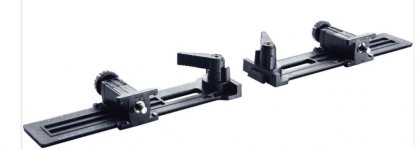Hello!
I bought the new domino connector set KV-SYS D8 and have had a play around with all the connector types. They all work exactly as you would expect them to except for the MSV D8/25 - the one that joins two adjacent shelves through a gable with a domino slot.
The piece that passes through the gable has a plastic domino that holds it in the slot. This plastic domnio has a small flange at either end that stops it pulling through the hole.

These flanges are, necessarily, wider than the domino slot and stand about 0.5mm proud of the surface of the board. Unfortunately, this means that the adjoining connector is unable to pull the shelf tight to the surface of the gable.

The most reasonable solution I've been able to come up with is to countersink the domino slot in the adjoining shelf to give the flange somewhere to go.

It works, but feels like a bit of an ugly and time consuming hack for such an expensive piece of hardware!
I hope I'm missing something obvious and welcome any thoughts!
Guy
I bought the new domino connector set KV-SYS D8 and have had a play around with all the connector types. They all work exactly as you would expect them to except for the MSV D8/25 - the one that joins two adjacent shelves through a gable with a domino slot.
The piece that passes through the gable has a plastic domino that holds it in the slot. This plastic domnio has a small flange at either end that stops it pulling through the hole.
These flanges are, necessarily, wider than the domino slot and stand about 0.5mm proud of the surface of the board. Unfortunately, this means that the adjoining connector is unable to pull the shelf tight to the surface of the gable.
The most reasonable solution I've been able to come up with is to countersink the domino slot in the adjoining shelf to give the flange somewhere to go.
It works, but feels like a bit of an ugly and time consuming hack for such an expensive piece of hardware!
I hope I'm missing something obvious and welcome any thoughts!
Guy


